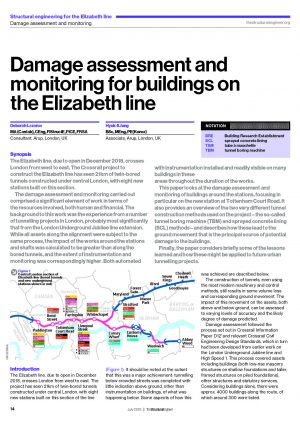The Elizabeth line, due to open in December 2018, crosses London from west to east. The Crossrail project to construct the Elizabeth line has seen 21km of twin-bored tunnels constructed under central London, with eight new stations built on this section.
The damage assessment and monitoring carried out comprised a signifi cant element of work in terms of the resources involved, both human and fi nancial. The background to this work was the experience from a number of tunnelling projects in London, probably most significantly that from the London Underground Jubilee line extension. While all assets along the alignment were subject to the same process, the impact of the works around the stations and shafts was calculated to be greater than along the bored tunnels, and the extent of instrumentation and monitoring was correspondingly higher. Both automated and manual methods were used, with instrumentation installed and readily visible on many buildings in these areas throughout the duration of the works.
This paper looks at the damage assessment and monitoring of buildings around the stations, focusing in particular on the new station at Tottenham Court Road. It also provides an overview of the two very different tunnel construction methods used on the project – the so-called tunnel boring machine (TBM) and sprayed concrete lining (SCL) methods – and describes how these lead to the ground movement that is the principal source of potential damage to the buildings.
Finally, the paper considers briefly some of the lessons learned and how these might be applied to future urban tunnelling projects.


